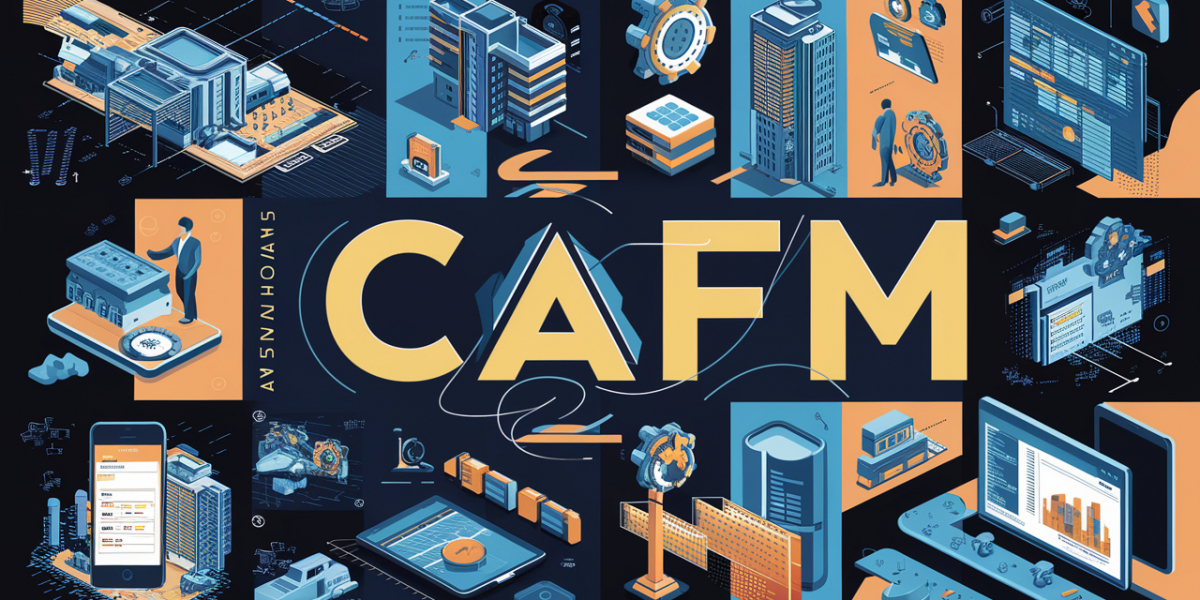Introduction
In the evolving landscape of facility management, the demand for smarter, more efficient management solutions is higher than ever. Computer-Aided Facility Management (CAFM) has emerged as a key player, transforming traditional facilities management into a more streamlined, data-driven, and automated process. With trends like Internet of Things (IoT) integration, artificial intelligence (AI), and data analytics reshaping industries, CAFM systems are not only keeping pace but setting the standard. Here’s a deep dive into how CAFM integrated facilities management solutions are addressing industry needs, adapting to trends, and offering unprecedented control and insight.
Understanding CAFM in Today’s Industry
CAFM stands at the intersection of facility management and information technology, enabling organizations to manage and maintain facilities more effectively. Using CAFM, facility managers can automate and optimize essential tasks such as space management, maintenance scheduling, asset tracking, and compliance monitoring.
Get Started in Minutes — No Coding Required | https://axonator.com/request-for-demo/
Latest Trends Shaping CAFM Integrated Facilities Management
1. Data Analytics and Predictive Maintenance
Modern CAFM systems leverage data analytics to provide insights into the usage, condition, and performance of assets. This is particularly impactful in predictive maintenance, where sensors and analytics work together to predict when equipment might fail. For instance, by monitoring usage data and environmental conditions, the system can alert managers to potential issues, enabling repairs before breakdowns occur.
2. AI and Machine Learning Integration
AI and machine learning are being increasingly integrated into CAFM solutions. AI can analyze vast amounts of data from buildings to optimize energy consumption, suggest space adjustments, and identify potential cost savings. Machine learning algorithms can also improve maintenance processes, learning from past issues and adjusting systems to prevent future failures.
3. IoT and Smart Building Integration
With IoT, CAFM systems gain real-time data on various building elements, from HVAC systems to lighting and occupancy. This integration enables CAFM platforms to provide insights into building performance, enabling real-time adjustments for energy savings and optimal facility conditions. A CAFM system can use IoT data to automatically adjust the temperature and lighting based on occupancy or weather changes, significantly improving operational efficiency.
4. Mobile-First Solutions
Facility managers are now increasingly mobile, and modern CAFM systems reflect this trend with mobile-first design. Mobile capabilities allow managers to access real-time data, approve work orders, and track assets from anywhere. Mobile CAFM solutions also empower field teams, as technicians can check maintenance histories, update statuses, and report issues in real-time through their devices.
5. Sustainability and Energy Management
As sustainability becomes a focal point for industries, CAFM solutions are evolving to incorporate energy management and sustainability features. By tracking and optimizing energy usage, CAFM systems can help organizations reduce their environmental footprint, lower energy costs, and contribute to corporate sustainability goals.
Key Industry Requirements and Needs
As industries continue to adopt digital solutions, CAFM has become essential to meeting several core requirements:
1. Efficient Space Management
With the rising cost of real estate, organizations are focusing on optimizing the use of existing spaces. CAFM systems provide real-time data on space utilization, allowing managers to adjust layouts, consolidate resources, and plan more effectively.
2. Cost Control and Budget Management
For many organizations, maintaining cost control is critical. CAFM systems support cost-effective facilities management by offering accurate forecasting, budgeting tools, and asset life cycle management. By understanding when assets need maintenance or replacement, organizations can avoid unexpected costs and allocate resources more effectively.
3. Enhanced Compliance and Safety Management
Compliance with regulatory standards, especially in industries like healthcare and manufacturing, is non-negotiable. CAFM solutions assist organizations in maintaining compliance by tracking inspection schedules, documenting maintenance activities, and providing reports for audits.
4. Asset Tracking and Lifecycle Management
A CAFM system provides a centralized platform for asset management, allowing organizations to track asset locations, usage, and maintenance history. Lifecycle management enables organizations to extend the life of assets by scheduling regular maintenance, tracking performance, and planning replacements when necessary.
5. Workforce Optimization
CAFM solutions are increasingly focused on workforce management, helping organizations assign tasks based on skills, availability, and proximity. This trend leads to faster response times, more efficient workflows, and reduced operational costs.
Learn More | https://axonator.com/blog/how-cafm-software-is-a-boon-for-facility-managers/
Integrated Solutions: Addressing the Industry’s Needs with CAFM
CAFM solutions offer a comprehensive platform to address these industry needs. Here are some of the solutions that modern CAFM systems bring to the table:
1. Centralized Data Management
CAFM systems offer a single platform for managing various aspects of facility operations, from asset management to space utilization and compliance. This consolidation of data provides an accurate, real-time view of operations, empowering facility managers to make informed decisions.
2. Enhanced Decision-Making through Data Visualization
The inclusion of data visualization tools allows facility managers to interpret complex data sets easily. Whether it’s a dashboard showing energy usage or a visual map of space utilization, these tools make it simpler to spot trends, identify areas of improvement, and make strategic decisions.
3. Automation of Routine Tasks
CAFM solutions automate numerous routine tasks, from scheduling maintenance to generating compliance reports. Automation saves time, reduces errors, and allows facility managers to focus on higher-value tasks.
4. Improved Communication and Collaboration
Many CAFM systems now feature tools for real-time communication, allowing managers, field technicians, and other stakeholders to collaborate seamlessly. These systems allow for task assignments, updates, and reporting to flow smoothly across departments, reducing bottlenecks and improving response times.
5. Tailored Reporting and Compliance Support
CAFM systems provide detailed reporting capabilities, allowing organizations to create custom reports tailored to specific industry standards. Compliance support is especially valuable in regulated industries where audits are frequent and stringent, enabling managers to maintain all necessary records in a centralized, easily accessible location.
The Future of CAFM in Integrated Facilities Management
As digital transformation continues, the future of CAFM will likely include deeper AI-driven analytics, more advanced IoT integrations, and stronger cybersecurity measures. These systems may evolve toward becoming fully autonomous, with AI making real-time adjustments based on data inputs without human intervention.
Future CAFM systems will also integrate more directly with other enterprise systems like Enterprise Resource Planning (ERP) and Human Resource Management (HRM) systems. This integration would allow for a fully connected and intelligent management infrastructure, where data from various organizational silos is used to optimize the facility as a whole.
About Axonator Inc:
At Axonator, Our vision is simple yet powerful: to enable the world on mobile. We envision a future where every aspect of business and society is seamlessly connected through mobile devices. Our mission is to empower businesses worldwide to leverage the full potential of mobile technology, transforming the way they operate, communicate, and collaborate.
Contact:
Axonator Inc (The World On Mobile)
Austin, TX, USA
USA: +1–716–274–8885
India: +91–8600–032–635
Email: support@axonator.com
Website: https://axonator.com/









